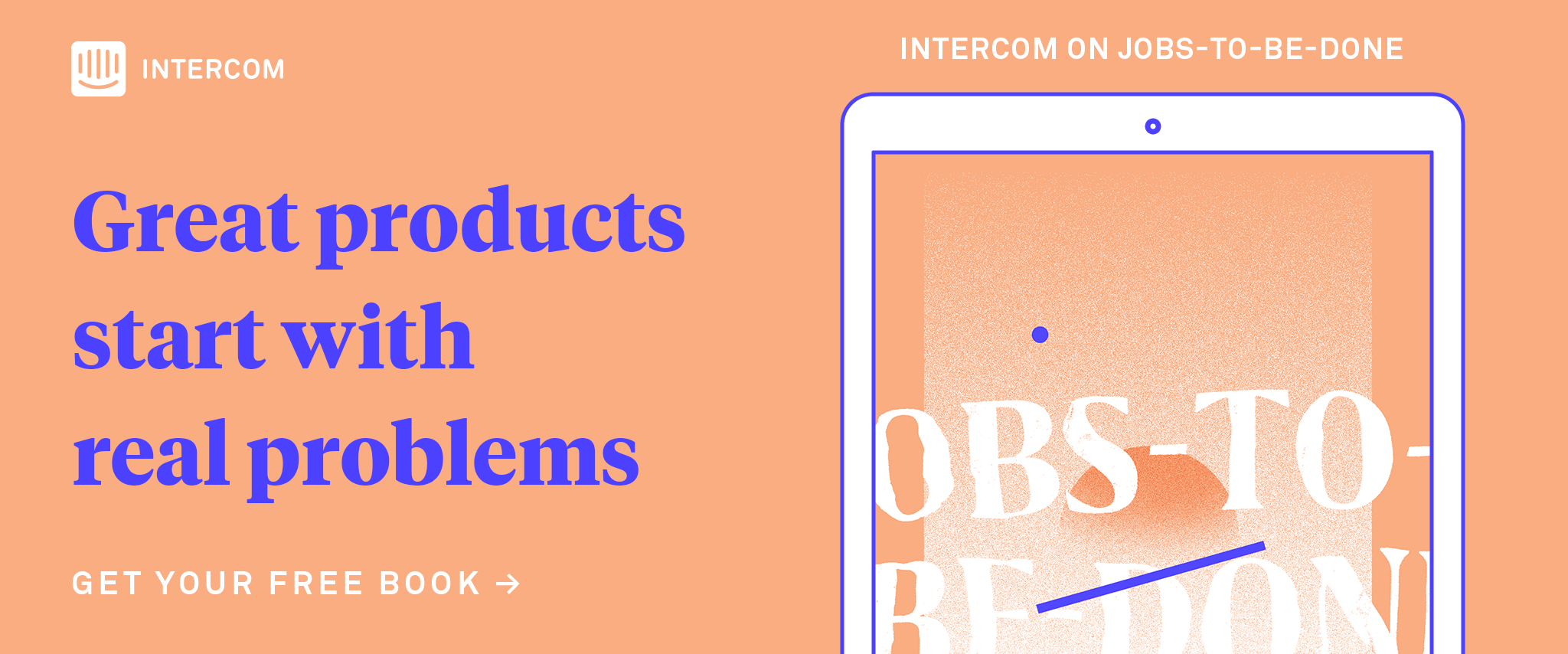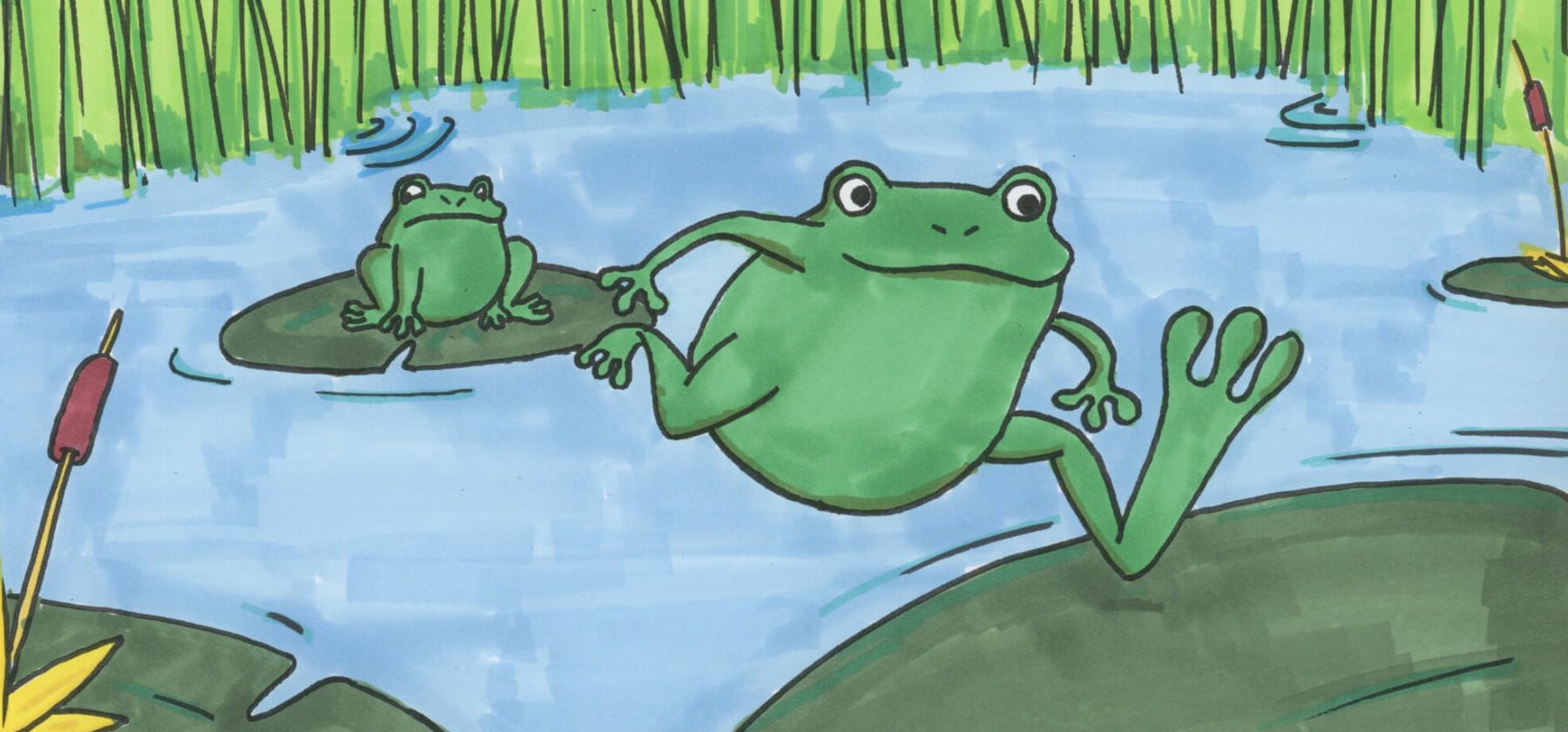
How to learn from churn – designing good user offboarding
Main illustration: Jason Yim
We’ve all signed up for a product only to realize a few months later that it didn’t quite fit our needs. Think about that gym membership you bought in January you’re still paying for even though the last time you went to the gym was in early February.
We remember how easy it was to sign up for the one week free trial on the gym’s website. But to actually cancel, you have to find a phone number, wait on hold, give your membership number and finally pay an exit fee before you can put an end to your ill-conceived new year’s resolution. Maybe you’ve had a similar experience trying to exit your contract with your cable television or wireless carrier provider. More often than not, the closing experience of these products leaves a lot to be desired.
“The last thing that you give attention to is what happens when a customer tries to leave”
The SaaS industry, unfortunately, is not immune to these poor experiences. Of course, when you’re working in a startup or high-growth SaaS company, the focus is often on maximizing active users and increasing revenue. We hear about all the growth hacks to get new users into your product, and the latest patterns in user onboarding (we’ve even written a book on it).
When your number one focus is bringing new customers to your business, often with limited time and resources, the last thing that you give attention to is what happens when a customer tries to leave. It’s easy for us to get caught up with the excitement of building new features and hard for us to believe that a customer would actually want to leave all of the cool stuff we’re building.
Dealing with reality
When you’re trying to validate an idea, work out product-market fit or find the right business model, you’re going to make a bunch of mistakes. You’ll hopefully learn from them, but it’s likely you will lose some customers along the way. As you go through this journey you don’t want to leave your customers with a sour taste in the mouth. A customer that leaves today might become a customer again later down the line as your business matures, grows and finds its fit.
The reality is that churn is a natural part of business, and it’s important that you work towards truly understanding it. Customers will come and go, and there are perfectly valid and unavoidable reasons that would make a customer leave. Consider the reasons for leaving; maybe it’s because their project finished and they no longer have a use for your product, or that their company is shutting down and they’re cancelling their accounts. Satisfied customers who are leaving for reasons unrelated to your product should be considered as non-regrettable churn, whereas regrettable churn is due to reasons that are within your control to address directly with your product.
“It’s crucial that you devise a method to get valuable feedback in order to learn lessons and improve your product”
You need to have a way to determine whether departing customers fall into the regrettable or non-regrettable categories, and it’s crucial that you devise a method to get valuable feedback in order to learn lessons and improve your product.
At Intercom, we ask cancelling customers to discuss their reasons for leaving, either in a questionnaire or in a conversation with a support or sales agent. This also gives us the chance to identify the nature of the problem that is causing the customer to consider leaving and either add it to our roadmap or see if there’s an immediate resolution available – quite often, we find that there are existing features that actually can solve their problem immediately and reduce or eliminate the need to churn.
And if they do decide to leave, you should work to ensure that churning customers have a satisfying leaving experience, making them more likely to consider coming back in the future or recommending you to others.
Consider the peak-end rule
There’s a theory called peak-end rule, a psychological heuristic which asserts that people largely judge an experience based on how they felt at two specific moments – at the peak or most intense point and at its end.

This challenges the commonly held belief that the sentiment of a product experience is based on the total sum or average of every moment that a customer experiences. So how should we think about designing an offboarding experience that leaves your customers satisfied, and more likely to try you out again in the future?
Make it easy
Resist the temptation to make it difficult for your customers to leave. Avoid using dark patterns that manipulate users into staying with you – instead, consider providing a way for customers to reach out and talk to someone prior to cancelling.
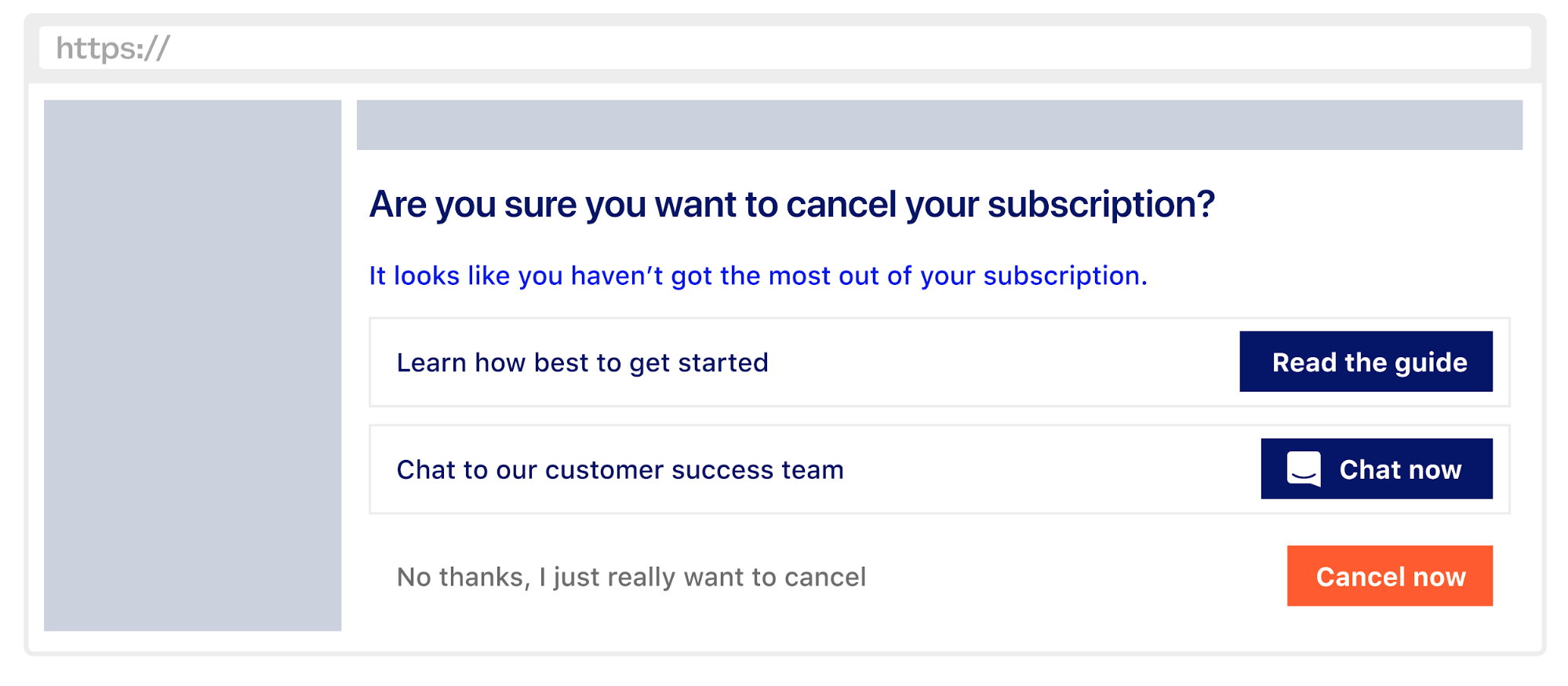
For those who can’t be swayed to stay with you, ensure that cancellation is easily discoverable in your product and happens promptly. Don’t make customers have to jump through hoops, or make them have to email you to cancel. You could even use Intercom to engage customers who are looking to cancel to open a personal dialogue.
Show value and benefits
Surface the benefits that a customer would leave behind if they left your product. Think about quantifying the value that they’d lose. Consider highlighting features that they regularly use to emphasize what they’ll be missing. It’s one last opportunity for you to thoughtfully design an “Are you sure you want to leave this all behind?” moment, which might convince them to stay with you.

Suggest alternatives
There are many strategies you could consider providing as alternatives to permanently losing a customer. Consider how you could change the value proposition of your product for customers who are considering leaving instead of letting them leave altogether. Jobs-to-be-Done pioneer Bob Moesta mentioned this while discussing the issue of “zombie revenue” – customers who are still paying for a service but no longer engaging with it fully – on the Inside Intercom podcast:
“Think of it this way: it’s not what causes them to quit, but what causes them to stay? And how do you reset the value proposition to say, ‘You know what? Fine. I’ll be a warehouse for a while, but remember, I’m still here and I can help you when you’re ready.'”
Think about offering the ability for a customer to deactivate or pause their account, transition them to a free plan, or, as Bob alludes to here, offer a pricing plan that lets your customers keep their data in your product so that when they’re ready to come back, you’re there.
Build a feedback loop
It’s critical that you work towards understanding the reasons why customers leave, ideally before they decide to leave, using future indicators like activity churn. But you should also be asking why at the point of the break up, and then use this as input into your product roadmap and strategy.
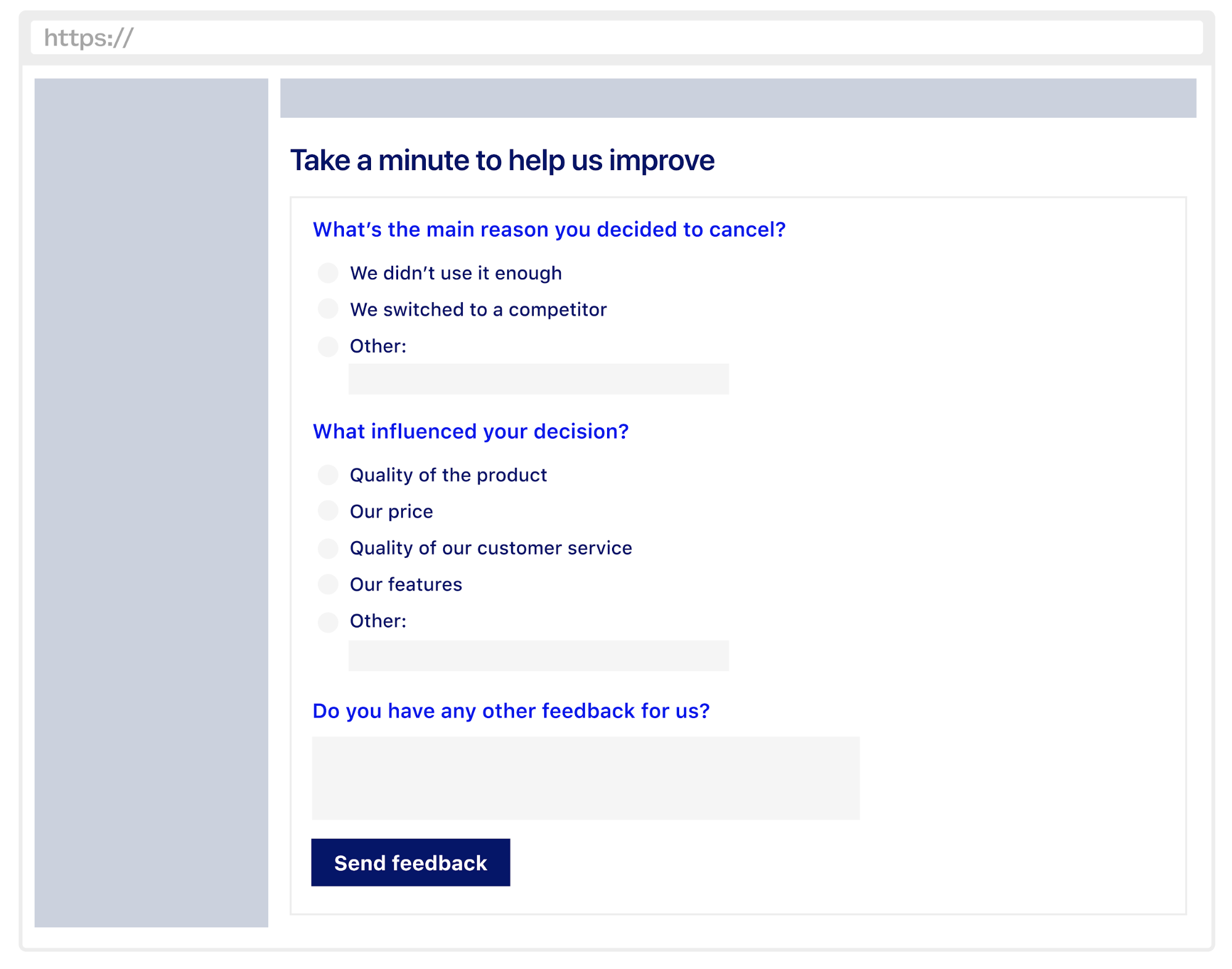
Present a questionnaire at the time on cancellation to quantify reasons for leaving and to collect qualitative feedback on why a customer is leaving. If you make cancelling an easy and effortless experience for customers, you’ll find that they’ll often be happy to give you with clear and constructive feedback.
Be memorable
Lastly, your product’s closing experience is an opportunity to be memorable, for the right reasons. Think about how you could reflect brand’s voice and tone to make a meaningful moment of your break up. A great example of this is Spotify’s Can we still be friends? playlist that’s shared with you when you go to downgrade your subscription.
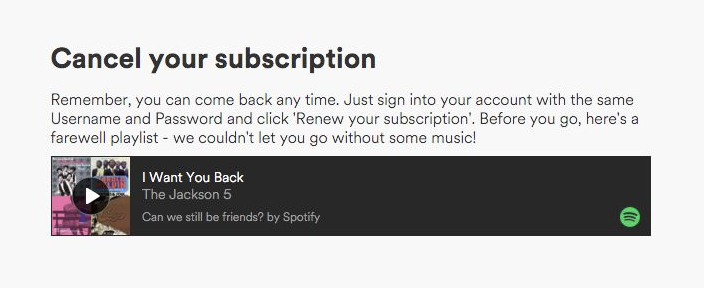
Don’t overlook how your customers break up with you – being intentional with the design of your offboarding experience can help you to better understand your customers, improve your product to prevent customers from leaving in the future and of course make sure they’re leaving with a favorable experience of your product.

